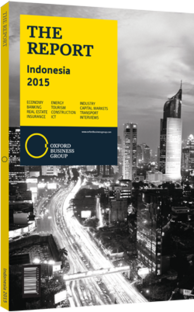Cultivating safety in Indonesia's Surabaya
Surabaya, on the island of Java, boasts a population of nearly 3m, but the population of Greater Surabaya is estimated at more than 10m, making it the second-largest city in Indonesia. In addition to its size, Surabaya is the birthplace of Sukarno, the country’s founding father and first president, and home to one of the busiest ports in South-east Asia. “We managed to become a city with the second-highest resident satisfaction in the world, losing only to Chennai, which has better public transportation,” Surabaya’s mayor, Tri Rismaharini, said during an American Chamber of Commerce event in 2014. This satisfaction is in no small part due to the efforts of Rismaharini herself, who has revitalised the city with new parks, provided free education and health care to its inhabitants, installed a drainage system to prevent flooding, and given jobs and housing to the unemployed and homeless. As a result, Surabaya is now ranked among the world’s top-10 safest cities, according to Rismaharini.
The mayor was honoured as the second runner-up for “World Mayor 2014” as a result of her work. The improvements have reflected well on Surabaya’s economy, which has been growing at more than 7% for several years. It grew 7.7% year-on-year in 2012, outperforming the country as a whole, which experienced 6.2% total GDP growth in 2012. In 2014 Surabaya’s economic growth shrank marginally to 7.6%, but GDP growth was still higher than the national rate.
Foreign Direct Investment
Opportunities for foreign investment include not only a new mass transit system but also many projects related to infrastructure design, eco-friendly urban planning and the education system. Attracting foreign investment and developing small and medium-size enterprises (SMEs) are the primary objectives for Surabaya’s administrators and the city’s politicians, according to the British Council. A significant portion of the city’s growth resulted from a rise in the number of SMEs located there. In addition, its port, which houses a naval base, has traditionally played an important role in connecting the nation’s islands.
Rismaharini has stated clearly that her sweeping reforms are made in the interest of attracting more investment and encouraging economic growth in her city. “I am preparing the city to be a trade and services city,” Rismaharini said in an interview with local media. “If we should have industries, we want high-tech and creative industries,” she explained.
Tackling Congestion
Although Jakarta infamously topped the rest of the world for the worst traffic congestion, at number four, Surabaya was not far behind, according to the Stop-Start Index compiled by Castrol. Between 2008 and 2011, the number of vehicles in the region grew almost five-fold, and Surabaya’s streets are clogged with more than 1.3m motorcycles and motor scooters, which made up more than half of all trips in 2012, according to the World Bank.
The Surabaya Mass Rapid Transportation (MRT) project, with a total value of £720m, will be the foundation upon which the mayor’s vision for the city rests. As plans stand now, the MRT will be split into two corridors. The north-south corridor will be a tram route constructed along the road network, while the east-west corridor will be an elevated monorail. Funding the MRT has been a challenge, according to Rismaharini. Although the MRT has been announced as a public-private partnership concession by the Indonesia Investment Coordinating Board, as of early 2015 no private partner had committed to the project. The monorail is expected to cost $990m and the tram $180m.
“We are planning to build monorails, but maybe it is better to ask President Joko Widodo for funding from the state budget, as getting a public-private partnership off the ground has not been easy. We also have signed an MoU with the minister of transportation, Ignasius Jonan, when he was still the chairman of Kereta Api Indonesia, the railway operator, on the development of a tramway system here,” Rismaharini said in 2014. If she can follow through on all her plans, she and the city may be able to win best mayor and highest resident satisfaction, both good signs for investors.
You have reached the limit of premium articles you can view for free.
Choose from the options below to purchase print or digital editions of our Reports. You can also purchase a website subscription giving you unlimited access to all of our Reports online for 12 months.
If you have already purchased this Report or have a website subscription, please login to continue.

